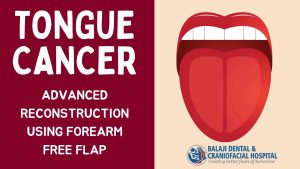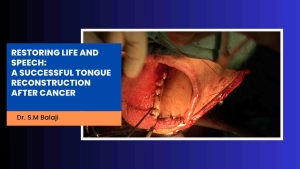Patient treated elsewhere for bilateral OKC four years ago with enucleation and resection
This patient is from Hyderabad, Telangana. He had undergone surgery elsewhere four years for bilateral mandibular odontogenic keratocysts. These cysts form in the bones of the jaws. This type of cyst has to be surgically removed. They are not like sebaceous cysts, which are minimally invasive. These cysts are comparable to polycystic ovaries in nature. Polycystic ovary syndrome converts the ovaries into fluid filled sacs. Ovarian cysts are always removed with care taken to preserve all surrounding internal organs. The patient carries the diagnosis of Gorlin-Goltz syndrome. Occurrence of many odontogenic keratocysts is a feature of this syndrome. This is very uncommon and is an autosomal dominant inherited disorder. The patient underwent bilateral enucleation and reconstruction of his mandible. Oral and maxillofacial surgeons remove these cysts.
Patient returns with pain in the left side of his mandible
Four years later, the patient noticed a swelling with pain in his left lower jaw. The patient was then referred to our hospital for treatment of his condition. Dr SM Balaji, an expert in mandibular reconstruction in India, examined the patient. Balaji Dental and Craniofacial Hospital is a premier center for mandibular cyst removal surgery in India. He ordered diagnostic studies including a 3D CT scan. This revealed recurrence of the odontogenic keratocyst on the left side. He explained that total enucleation was the best way for removing the cyst. The patient consented to surgery after a detailed review of this.
Enucleation of OKC followed by reconstruction with rib grafts
The surgical procedure commenced after general anesthesia. Rib grafts were first obtained through the old inframammary scar. A Valsalva maneuver confirmed patency of the thoracic cavity. The incision was then closed with sutures. Following this, a left sided vestibular incision was next made. The OKC was then thoroughly enucleated from the mandible. The cyst wall lining was carefully removed completely from the lingual surface of the mandible. Care was taken to ensure there were no remnants of cyst wall lining left behind. The mandible was then reconstructed using the rib grafts, titanium plates and screws. The incision was then closed with sutures.
The patient recovered well from general anesthesia. The patient will need periodic checkups over the next few years. This will be to ensure that there is no recurrence of the OKC. The patient’s facial reconstruction surgery had good results.





